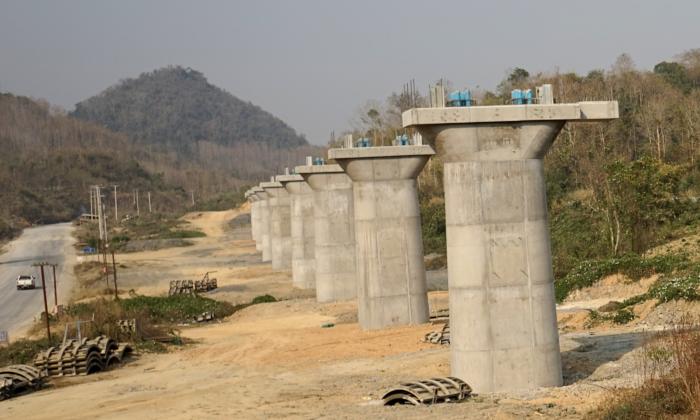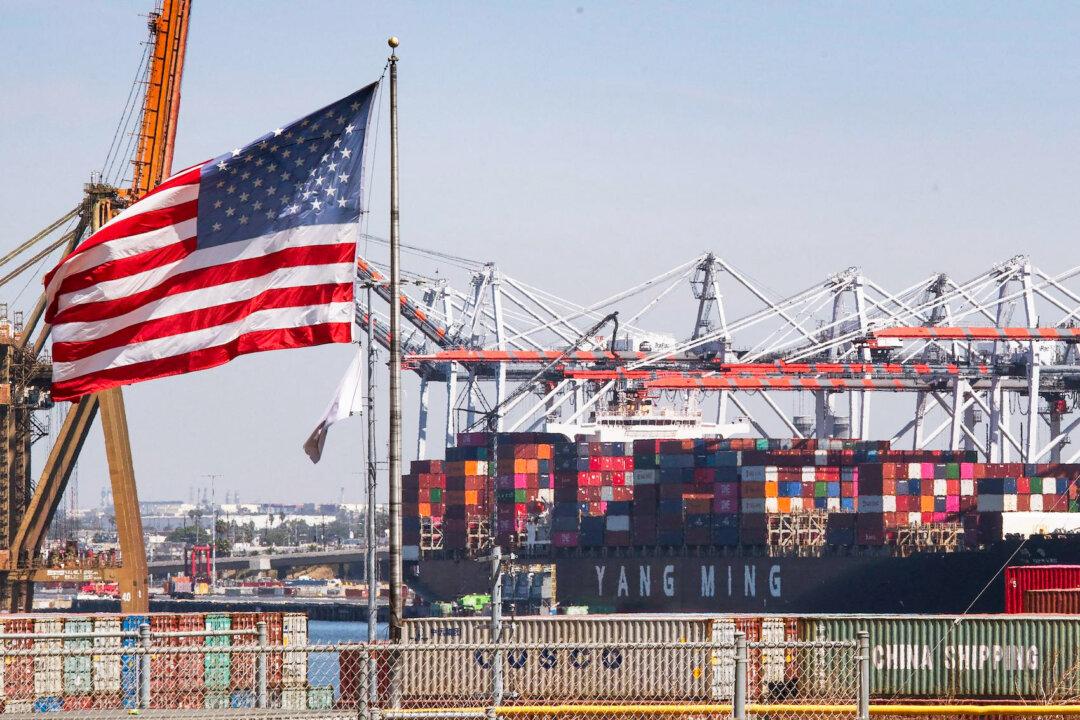Commentary
The Chinese Communist Party (CCP) is taking contradictory economic policies that seem to make little sense: cutting rates, increasing credit, and enforcing the “zero-COVID” policy while facing mounting debt, falling currency, declining consumer demand, rising unemployment, and slowing growth.
The Chinese economy is arguably in worse shape than it was 30 or even 40 years ago because, back then, it was not teetering on the brink of collapse. And Beijing seems to have no answers.
Currently, factory activity is down as it has been steadily contracting over the past three months. Exports were weaker, and imports fell in September. Pessimistic about the future, Chinese consumers are spending less. Retail sales grew by just over half of the predicted rates in July, coming in at 2.7 percent as opposed to the forecasted 5 percent. As a result, consumer price inflation (CPI) dropped to 2.5 percent. The People’s Bank of China (PBOC) sets a ceiling for CPI inflation at 3 percent—the amount of inflation the CCP believes to be desirable and healthy for the economy. Numbers below 3 percent mean that the economy is growing too slowly.
About 20 percent of China’s urban youth are unemployed. New home prices have been falling. Housing sales were also down 27 percent year-on-year in August. The country faces a debt crisis fueled by the real estate sector, which accounts for about a quarter of GDP and about 26 percent of the country’s total debt. Analysts at S&P have determined that about 20 percent of China’s developers are in danger of default.

A residential complex built by property giant Evergrande in Beijing in this undated photo. Noel Celis/AFP/Getty Images
Meanwhile, as developers run out of cash to complete construction, citizens refuse to pay their mortgages. These mortgage strikes are expected to negatively affect $133 billion worth of debt and create a vicious cycle of defaults and threats of default.
Meanwhile, estimates for the impact of a real estate collapse go far beyond the GDP contribution made directly by the sector. The real estate slowdown is already negatively affecting allied and related industries such as steel production. Twenty-nine percent of steel producers have announced that they are nearing bankruptcy. Together, real estate and construction make up about 15 percent of jobs in urban areas. By some estimates, a 20 percent decrease in property-related investments could cost China 5 percent to 10 percent of its GDP.
Globally, the reduced demand for steel in China has caused iron ore prices to fall 36 percent since March. Countries dependent on commodity exports—such as iron, coal, and metals—are feeling the effect of a China slowdown. As these countries’ economies contract, they find it more difficult to make interest payments on their Belt and Road Initiative (BRI) loans from China. The debt load is threatening to crush many of China’s BRI builders while ultimately adding a level of public debt risk that has previously gone unnoticed.
BRI lending has been in the tens of billions yearly, with about $59.5 billion in 2021 alone. Now, requests from troubled borrowers for restructuring and write-offs are at an all-time high. The problem is expected to worsen as 60 percent of China’s foreign loans have been made to countries that are now in debt crises.
Adding to the looming debt catastrophe is the fact that thousands of local government financing vehicles (LGFVs) are poised to collapse. LGFVs are the debt instruments sold by local governments and are one of the main drivers behind China’s growth. The total value of China’s LGFVs is estimated to be nearly $8 trillion, or about half of the country’s GDP.
Typically, local governments would use the sale of real estate to repay the LGFVs. But with real estate sales now in steady decline, local government income from land sales was down 31 percent in the half of this year, making it unclear how the local governments will make good on their debts. S&P believes that 30 percent of local governments are on the brink of crisis. The irony of local government debt is that much of the debt was derived from the need to finance infrastructure projects mandated by Beijing. Effectively, CCP central planners ordered these local governments to create debt; now, they are left holding the bag.
The banking sector is also facing a debt crisis. Non-performing loans have been steadily increasing. Bad loan disposal rose 18 percent in the first half of this year, while loan write-offs at small- and medium-sized banks jumped to 37 percent. In August, Beijing injected $47 billion into small- and medium-sized banks to keep them liquid. This cash was raised through the sale of infrastructure bonds. China’s private debt now stands at 184.49 percent of GDP, while government debt is expected to reach around 70 percent of GDP this year for a total debt of 250 percent of GDP.

People hold banners and chant slogans during a protest at the entrance to a branch of China’s central bank in Zhengzhou city, in central China’s Henan Province, on July 10, 2022. Yang/AP Photo
Toward the end of September, the offshore yuan hit a record low of 7.2368 against the dollar, while the onshore yuan hit 7.1690, breaking Beijing’s threshold of 7.
In response to abysmal economic figures, Beijing announced that effective Oct. 1, it would cut the provident fund loan interest rate by 0.15 percentage points for first-time home buyers. The central government is also extending tax benefits to those who sell their home and rebuy in the same year. Ostensibly, they are doing this to help increase cashflows into the beleaguered real estate sector. Some analysts feel it is too little, too late. Others point out that these expansionary policies will worsen the situation.
The CCP seems to be trying to tackle the economic instability through two tactics. It keeps interest rates low and increases the money supply to grow the economy. Beijing is also planning to try and rescue the yuan. At the end of September, the PBOC injected $122 billion into the banking system—this is up from about $12.92 billion the prior week, increasing liquidity by 843 percent. Low-interest rates and increased liquidity have pushed the yuan’s value to lows not seen in decades.
Meanwhile, the PBOC has told state-owned banks to prepare for a yuan buying spree to prop up the currency. Trying to increase the yuan’s value while increasing the money supply seems contradictory. At the same time, the country’s foreign reserves have declined steadily since December 2021.
Despite an economy in decline, the CCP is holding fast to its “zero-COVID” policy. During pandemic-related lockdowns in the first half of 2020, 2.3 million businesses failed. Two and a half years later, Beijing refuses to let go of its draconian policy. This is causing investors and consumers to sit on their cash, hampering economic growth.
Investment is leaving China. The amount of Chinese bonds held by foreigners has decreased every month for the past seven months for a total decline of $83 billion. Some investment banks have slashed their China GDP growth forecasts to 3 percent, while Nomura cut its forecast to 2.7 percent.
The Chinese economy cannot recover until the yuan recovers, the real estate sector rebounds, and a solution is found for China’s massive debt. Given the current policies, solutions do not seem likely in the near or medium term.
Views expressed in this article are opinions of the author and do not necessarily reflect the views of The Epoch Times.





